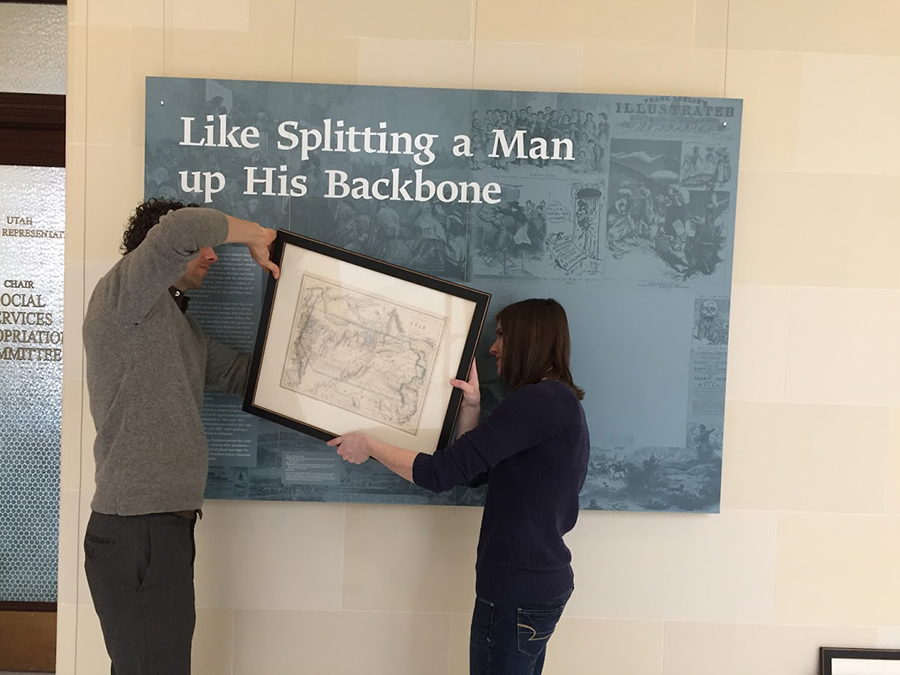PhD Graduate Travis Ross co-curates award winning exhibition

"This exhibit began with the desire to build a public history and art exhibit around a core collection of rare maps assembled by the local businessman Steve Boulay,” said Ross. “On their own, Steve’s collection told a visually compelling story about the cartographic history of western North America, but especially of the region that became Utah. The exhibit uses the familiar and visually-interesting forms of the map – which purports merely to tell the truth – to explore all the ways that ostensible facts like place names and spacial relationships are actually perspectives determined by political control, economic interests and cultural assumptions."

"We tried to do some pretty high-level stuff while targeting the capitol’s high volume of middle school visitors. It might seem pretty abstract to argue that competing visions of land use lead to fundamentally different ways of organizing and imagining landscapes. Put that argument alongside two maps that juxtapose the stark difference between the neat grid of a Mormon settlement and the seemingly haphazard streets of a mining town where planners cared mostly about getting subterranean wealth out of the ground, and that argument becomes much more concrete. I think the exhibit helps to illustrate abstract arguments made by historians and geographers, but it also asks visitors to question the authority and neutrality of maps."
